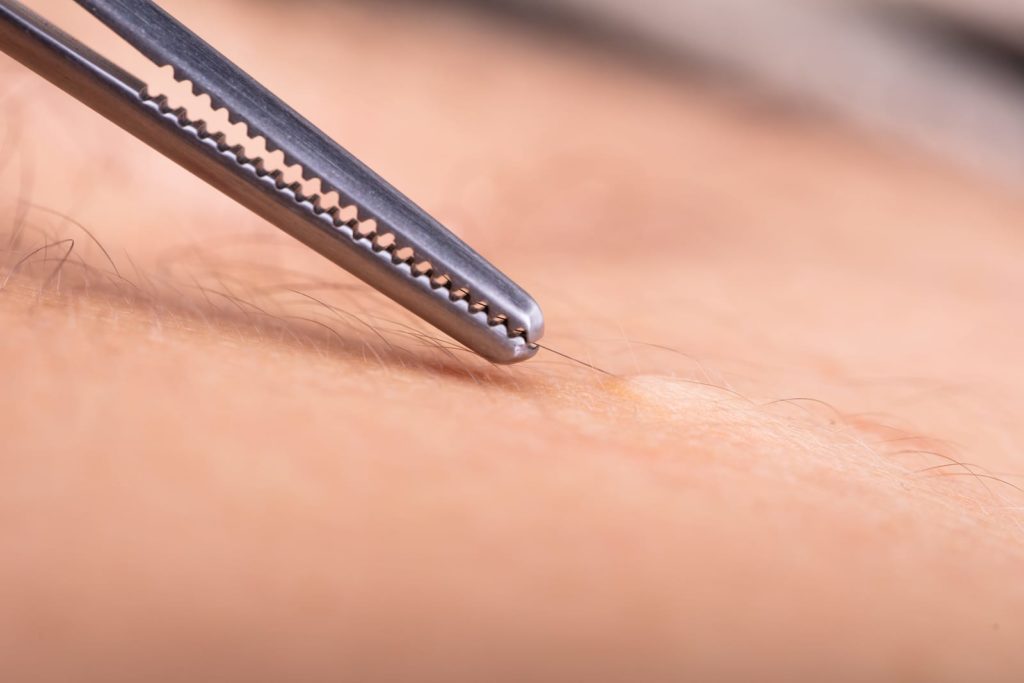Trichotillomania (hair-pulling disorder) is a mental health condition that centers on a compulsive desire to pull out the hair that grows in various body areas. Prior to May 2013, the American Psychiatric Association (APA) classified this condition along with a larger group of disorders known as impulse-control disorders. However, with the publication of a latest edition of its highly influential Diagnostic and Statistical Manual of Mental Disorders, the APA moved trichotillomania into a newly established category of conditions called obsessive-compulsive and related disorders. This move was part of a broader reorganization of conditions within the Diagnostic and Statistical Manual.
Trichotillomania (Hair-Pulling Disorder) Basics
People with trichotillomania either pull or twist their hair until it breaks and falls away. The most common target for this pulling and/or twisting is the hair on different parts of the scalp. Other potential targets include the eyebrows, eyelashes and parts of the body other than the head or face. Most of the effects of trichotillomania are cosmetic, and include things such as thinned-out hair on parts of the scalp, more concentrated patches of lost hair on the scalp, missing or thinned-out eyelashes and missing or thinned-out eyebrows. However, some people with the disorder also eat the hair they remove from their bodies; in some cases, these individuals develop symptoms of malnutrition or unintentionally trigger significant intestinal blockages. Most people develop trichotillomania at some point before the tail end of adolescence, the U.S. National Library of Medicine’s PubMed Health reports. Doctors and researchers don’t know what leads to the onset of the disorder, but some affected individuals apparently use hair-pulling or hair-twisting to relieve pent-up emotional stress or produce a reliable pleasurable sensation. In some cases, people who compulsively pull or twist their hair also engage in other types of behavior that mental health professionals refer to collectively as nonsuicidal self-injury. Affected individuals also frequently have low self-esteem, as well as symptoms associated with some form of depression or medically serious anxiety.
Mental Health Definition
The Diagnostic and Statistical Manual contains the guidelines that doctors use when making a trichotillomania diagnosis in their patients. The guidelines currently used in the fifth edition of the manual (DSM 5) are the same as the guidelines contained in the manual’s fourth edition (DSM IV). In order to qualify for a diagnosis, a person must repeatedly engage in hair-pulling behaviors that produce an obvious loss of hair. He or she must also experience a building sense of mental strain prior to pulling out hair, or alternately, must feel the same building sensation while actively trying to avoid pulling out hair. In addition, in the immediate aftermath of a hair-pulling episode, the affected individual must feel a reduction in mental strain that manifests as noticeable relief or pleasure. Finally, the presence of trichotillomania must interfere with a person’s ability to participate fully in everyday life, or produce significant mental discomfort outside of hair-pulling episodes. DSM IV defined trichotillomania as an impulse-control disorder, along with other conditions such as kleptomania, intermittent explosive disorder, pyromania, and a disorder then known as pathological gambling. These conditions were grouped because then-current scientific and medical opinion viewed them all as stemming from an ongoing inability to control self-harmful mental impulses. Between the publication of the last revision of DSM IV and the publication of DSM 5, a committee of specialists within the American Psychiatric Association concluded that scientific and medical evidence no longer support this grouping of disorders. In line with this revised thinking, DSM 5 removes trichotillomania from the impulse-control category and places it with a newly formed group of conditions known as obsessive-compulsive and related disorders. In addition to trichotillomania and obsessive-compulsive disorder itself, conditions now listed in this category include hoarding disorder, excoriation (skin-picking) disorder and body dysmorphic disorder. The APA grouped these disorders under a new heading after concluding that they all involve feelings and behaviors that relate in one way or another to the feelings and behaviors found in people with diagnosed cases of obsessive-compulsive disorder. DSM 5 also makes a slight change to the name of trichotillomania, which is now officially known as trichotillomania (hair-pulling disorder). This change was made so doctors can use the condition’s actual technical name while still making the meaning of that name more comprehensible to their patients and to the general public.

